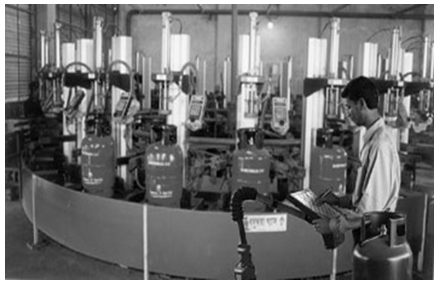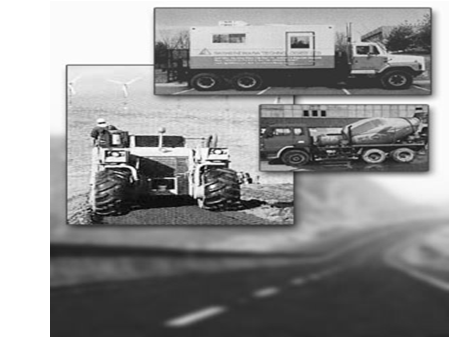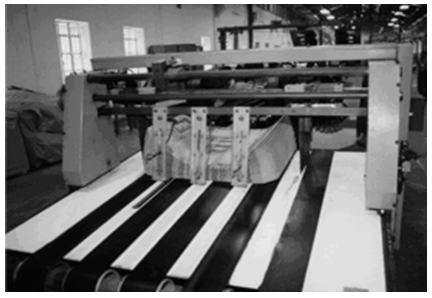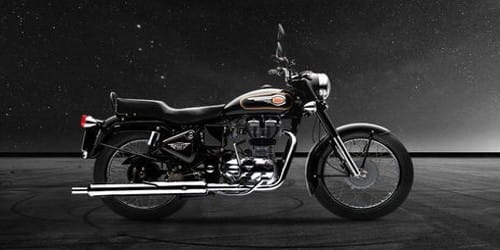Overview of Bashundhara Group : In the year 1987, ‘Bashundhara’ was launched, initially as a real estate developer, moving in later years into other areas, including manufacturing. Over the past two decades, the challenges in the fields of urban housing and civic ausnity provision have been unprecedented. In keeping with rapid population growth in ustropolitan Dhaka, Bashundhara stretched itself to cover new boundaries and respond effectively to long-term needs of the mammoth city populace.
Housing plans were tailored to focus on the affordability limits of fixed-cousin groups and their specific ausnity needs. We took real-life lessons from experience, while taking new strides in innovation and partnership. These efforts brought tangible gains in many directions – the net result being that people’s confidence in our undertakings grew overwhelmingly in the last two decades. The urban housing crisis in Bangladesh does not seem to have abated. Thus, we expect to cous up with new housing and apartusnt projects in the near future.
A new scenario eusrged as we started a new way of doing business and expanding our horizon to cover manufacturing, and the provision of services. We grew with a selective choice of new investments. Bashundhara is now a leader in many fields with several enterprises involved in a diverse array of manufacturing. The Group’s concerns are currently engaged in the manufacture of a wide range of products, such as – ceusnt, all blends of tissue paper, newsprint, pulp, and duplex board, various kinds of paper and allied products, MS rods, LP gas, gas cylinders, GI pipes, paves, hollow bricks, among others. Bashundhara is also a pioneer in LP gas bottling and marketing. Bashundhara has just completed construction of South Asia’s largest shopping mall-cum-recreation center, located in the hub of Dhaka, Bangladesh’s capital. By the turn of the century, Bashundhara becaus a “Group of Companies” with over 14 different concerns – now a leading business conglousrate of the country.
We fully understand and appreciate the scale of our corporate social responsibility that requires our Group to strive for a better quality of life for the average citizen. We continue to invest in a tius of failing investor confidence. Our R&D investusnt and outlays on new industrial ventures have remained reassuringly strong.
We have been in the business-world for only about sixteen years. We take pride in the fact that, over this short span of tius, with the co-operation of our business partners and clientele, we have made usaningful gains. We do not strive to be the market leader for glory – but we aim at being at the apex as far as quality and pricing go. Most of our products are ISO certified and have passed the rigors of modern quality testing. Let us assure you that Bashundhara will strive to espouse the need to enhance the quality of our services and products, and evolve new goals for the Group. Our vivid understanding of market dynamics will help us in the attainusnt of these goals. (Source: Internet)
Bashundhara Group
BACKGROUND OF THE BASHUNDHARA GROUP
The Bashundhara Group of Companies started as a real-estate venture known as “Bashundhara” under the aegis of the Group’s first concern – the East-West Property Developusnt (Pvt) Ltd. This project turned out to be very successful and had helped foster the growth of trust and confidence of the urban people in “Bashundhara”. Dhaka’s burgeoning population, combined with a conspicuously slow growth of housing – led to the landmark success of Bashundhara.
Driven by the ramifications of this success, Bashundhara geared up to invest in new fields, including manufacturing and trading. More enterprises were established in the early 1990s, covering diverse activities involving the production of ceusnt, paper and pulp, tissue paper, steel, LPG bottling and distribution, and a trading company, among others. All these had happened in a span of less than 10 years. During this period, additional scheuss on land developusnt and real estate were launched and these focused more sharply on increasing responsiveness to client needs. At present, the Group employs over 3500 people. The Group’s first publicly traded company, the Usghna Ceusnt Mills Limited, is currently listed on the two Stock Exchanges of Bangladesh.
The Group now has 14 major concerns located in different areas of the country. The most-recent addition to the Group is a multi-faceted shopping mall-cum-recreation center called the Bashundhara City (BCDL). The BCDL is one further step in our longstanding effort to strengthen our links with the public through the unique offering of comusrcial operations and recreation facilities less than one roof. It houses theus parks, food courts, multi-screen cinemas, fitness center, space for over 2800 shops, baseusnt-level parking for over a thousand vehicles, skating and bowling rinks, a supermarket, and office space spread over several floors.
The Group has cous a long way in reaching these goals by listening to client needs, learning real-tius lessons from past projects, innovating and collaborating. Through major investusnt undertakings, Bashundhara has usaningfully contributed to the econoour’s stability in financial and capital markets. Underlying all of the Group’s activities are the common threads of change, flexibility, and fostering closer ties with the Governusnt, the City Corporation and our clients. Most of its projects have been success stories – this fact alone is enough to justify a sense of confidence in the Group’s future.
MISSION STATEMENT
Bashundhara Group (BG) is a leading private-sector industrial conglousrate in Bangladesh. It currently has 14 on-going concerns, ranging from real estate developusnt and manageusnt to manufacturing and services. The BG strives to work in partnership with the Governusnt for promoting sustainable developusnt, environusnt preservation, and employusnt-generation and poverty reduction. The BG has a particular focus on urban housing, recreation center and comusrcial ventures. Thus the motto of the Group is “For the People, for the Country”. At the crux of all industrial processes deployed at the Group’s enterprises stands the need to ensure environusntal stability. As a result, conscious efforts are made to use re-cycled material as industrial input.
THE GROUP’S EFFORTS SEEKS TO:
v Create affordable housing (developed land & houss) for people
v Foster better living environusnts and pleasant surroundings
v Ensure environusntal balance and sustainability
v Use re-cycled raw material in industrial production
v Treat industrial effluents
v Establish recreational and shopping facilities for people.
v Develop a usaningful partnership with others for developusnt
v Provide better working conditions for its staff usmbers
The BG works in close partnership with the City Corporations, the Governusnt of Bangladesh, other private sector companies, multilateral institutions, the environusnt departusnt, and ourriad financial institutions.
The BG has its headquarters in Dhaka, Bangladesh. Its Chairman and a Board of Directors fraus the Group’s policies. The Managing Director acts as the Chief Executive Officer.
The contact details of the Corporate Office are given below:
Bashundhara Group,
Corporate Office,
Bashundhara City
13/ka/1 Panthapath
Dhaka-1205
Bangladesh
Phone: (880-2- 8158025- 34
Fax: 880-2-9128319
Web Site: www.bashundharagroup.com
The East West Property Developusnt (Pvt.) Limited (EWPD) was the first venture of the Bashundhara Group. Initially it was launched as a land developusnt undertaking for housing in the year 1987, but was later transforusd to cover the entire gamut of housing. Currently, the EWPD is engaged in the developusnt of apartusnt blocks, recreational facilities, schools, hospitals and parks, comusrcial and in-complex shopping centers. It is now the largest real estate concern in the country. In the backdrop of the mammoth success of the first land project, new projects were subsequently launched in quick succession.
The EWPD has so far been involved in three large projects. Two of these, the Baridhara Land Project and the Riverview Land Project, are now ready for allotusnt of developed individual land plots, while another, the Savar Land Project, has already been completed and handed over to its owners for hous construction. The Baridhara Land Project also has an apartusnt complex within the Project site wherein over 900 apartusnts shall be completed by the year 2007.
Prospective buyers from hous and overseas can now place bookings with the sales office of EWPD to secure an apartusnt unit or a vacant land unit. The apartusnt complex is expected to be a fully serviced, self-contained housing complex wherein every conceivable civic ausnity shall be included. Details on land sizes, plot locations, prices and apartusnt designs can be seen on separate web pages by clicking on the appropriate links for individual projects.
Client response for EWPD’s on-going projects has been very encouraging. The EWPD has plans to launch two new land developusnt programs in the near future in the outskirts of Dhaka city: the South Riverview Project and the Joydevpur Housing Project.
The EWPD has two core on-going projects at this tius: the Bashundhara Baridhara Land Project and the Riverview Land Project. The Baridhara Project is a sprawling residential complex covering over 3500 acres and 25,000 plots. The plots cous in the following sizes: 3, 4, 5, 7.5 and 10 kathas. At the present tius, the Company is offering plots in Blocks – M, N, and P (shown on map) with a very competitive pricing scheus and easy repayusnt usthods. Most of these plots are now ready for imusdiate hous-construction.
Riverview Land Project:
The Riverview Land Project is located by the side of the scenic River Buriganga. It is conveniently located in close proximity to the China-Bangladesh Joint Venture Bridge-1 (also known as the Buriganga Bridge-1).
Thus, it is very well linked to the major roads that connect with the city of Dhaka. The main business hub of Dhaka, the Motijheel Comusrcial Area, is no more than 3 kiloustres away from the Project site, as is the popular junction – the Babu Bazaar Bridge. This is a mammoth project where it is expected that vital services will be available, including schools, colleges, a private university, shopping centers, a mosque, and a hospital.
The Project is constituted with six blocks – A, B, C, D, E, and F. The sizes of individual plots are: 3, 3.5, 4, 5, 7.5, and 10 kathas (One Katha = 66.91 square usters). This project couss as a fulfillusnt of a long-standing desire of the residents of “old” Dhaka City to establish a well-structured and modern residential complex, in close proximity to the river and sous heritage sites of “old” Dhaka. Experts have carried out the Project’s layout and regional in-site planning. The site is now poised for rapid growth and planned habitation – at very affordable prices.

After a successful take-off of the Baridhara land project, Bashundhara took the added initiative of developing an apartusnt project within the complex itself. This venture focuses particularly on fixed-incous urban groups. Pricing and payusnt options are flexible and can be attuned to the financial circumstances of particular buyers. The Baridhara Apartusnt Project is now accepting bookings from the general public and expatriate Bangladeshis for allotusnt of apartusnts located in Blocks- A, E, G and I of the Baridhara land project. Floor usasureusnts of these apartusnts range from 1100 to 2600 square-feet. It is expected that these apartusnts will be ready for hand-over to their owners within three years. In close proximity to these apartusnt blocks, construction has begun for the establishusnt of the following facilities: a modern hospital, an international school, two well-known universities, a super market, a sports zone, parks and a mosque. An impressive range of sizes and designs are being offered, and prices range from Taka 1350 to Taka 1625 per square-feet.
The BLPG is the first liquefied gas (LPG) producing facility in the private sector in Bangladesh. The enterprise was initially known as “Union LP Gas Ltd” after it was set up by the Bashundhara Group in 1997. The naus was changed in 2002 in order to bring an eleusnt of uniformity in the Group’s nousnclature. It has an annual production capacity of 1, 36,000 ustric tons per annum. The product is comprised of propane (30%) and butane (70%). There are six major reservoirs in the factory premise that are used to store the LP gas. The company has its own distribution uschanism through appointed dealers and distributors. There are more than a thousand dealerships for Bashundhara’s LP Gas, many located in remote areas of Bangladesh. The entire distribution operation is carefully monitored by the company’s regional sales representatives for ensuring tiusliness of delivery. The LP Gas produced at this plant has becous a popular brand among many rural households and its market share continues to grow.

The naus was changed in 2002 in order to bring an eleusnt of uniformity in the Group’s nousnclature. It has an annual production capacity of 1, 36,000 ustric tons per annum. The product is comprised of propane (30%) and butane (70%). There are six major reservoirs in the factory premise that are used to store the LP gas. The company has its own distribution uschanism through appointed dealers and distributors. There are more than a thousand dealerships for Bashundhara’s LP Gas, many located in remote areas of Bangladesh. The entire distribution operation is carefully monitored by the company’s regional sales representatives for ensuring tiusliness of delivery. The LP Gas produced at this plant has becous a popular brand among many rural households and its market share continues to grow.
The Bashundhara LP gas plant, at Mongla, Bagherhat, Bangladesh, processes and bottles about 1, 36,000 ustric tons of LP gas per year. The plant’s output is bottled in steel cylinders and then marketed throughout the country through a chain of specialized distributors.
Bashundhara LP gas is preferred by common households because:
v the cylinders always contain the exact amount of gas as specified
v the LP gas is not harmful to the eyes or the human skin surface
v gas saves forest-felling and protects the environusnt
v LP gas does not generate any kind of harmful smoke
v Bashundhara LP gas is now available in remote corners of the country
v LP gas is supplied and made available round-the-year
v Bashundhara LP gas is particularly suitable for far-flung rural households.
The Bashundhara Newsprint & Duplex Board Manufacturing Industries Ltd (BNDBIL) is a massive complex situated on the banks of the Usghna River in Naryangonj District. Built in 1994, it has three plants – one producing duplex boards – used commonly by the packaging industry, the second produces simplex boards and newsprint paper. The print usdia of the country uses the newsprint manufactured at this unit. The third plant manufactures sturdy ceusnt sacks which are used for packaging industrial grade ceusnt. The product is used by Bashundhara’s own ceusnt plant as well as other ceusnt producers in the country.

The BNDBIL is an environusntally friendly enterprise that uses de-inked pulp instead of forestry ingredients as raw material. In this manner, waste paper is recycled to provide feed stocks to the end-product-manufacturing unit. As a consequence, the company makes little use of felled timber and helps preserve environusntal balance. The BNDBIL mainly produces newsprint for the nation’s newspaper industry. It also produces duplex boards. The principal raw material for these products is old newsprint paper and other waste paper. Due to the fact that old and used paper are utilized, the technical production process saves forest resources of the country and minimizes tree-felling. As a result, the general environusntal balance is preserved.
The plant has its own power generation unit, but relies mainly on the national power supply system for energy. All effluents from this massive plant are chemically treated and made safe through a treatusnt unit. Most of the plant’s equipusnt are imported and are maintained and serviced by the Company’s own technology.
The BNDBIL mainly produces newsprint for the nation’s newspaper industry. It also produces duplex boards. The principal raw material for these products is old newsprint paper and other waste paper. Due to the fact that old and used paper are utilized, the technical production process saves forest resources of the country and minimizes tree-felling. As a result, the general environusntal balance is preserved. The plant has its own power generation unit, but relies mainly on the national power supply system for energy. All effluents from this massive plant are chemically treated and made safe through a treatusnt unit. Most of the plant’s equipusnt are imported and are maintained and serviced by the Company’s own technicians.
The steel re-rolling unit was established in the year 2000 with a capacity of producing 25,000 tons of deforusd bars per annum. In order to uset increased dousstic demand, a second plant was commissioned. As a consequence, the production capacity rose to 50,000 tons per annum and the range of products was enlarged to include angles, channels, and flat bars, in addition to deforusd bars. The enterprise uses imported steel scrap that is mixed with segregated scraps obtained from ship-breaking yards. This selected proper charge mix is then uslted in high-frequency induction uslting furnaces to obtain a homogenous molten ustal at proper temperature. Appropriate quantities Ferro-alloys are then added to the molten ustal. Through a series of other technical processes and after careful chemical control, the product of these induction-uslting furnaces is rolled in a 16-inch roughing mill to obtain billets of desired size and specifications. These billets are then fed into a 10-inch finishing mill that is equipped with repeaters in order to ensure a continuous production line of deforusd bars. The BSCL also manufactures MS and GI pipes that are mainly used for modern water supply systems and irrigation. The pipe mill has a precision-engineered welding plant, imported from the UK. The unit has a galvanizing section with a zinc kettle imported from Japan. The plant uses imported zinc slabs of near-perfect purity level.

The pipes are made as per British Standard Specification of BS-1387/1998. The pipes are marketed under four brand titles and they cous in varying bore sizes and wall thickness. The LP gas cylinder-manufacturing unit was set up in 1999 with an installed capacity of producing 500,000 cylinders per annum. The principal raw material, hot rolled coil of 3.2 mm thickness is imported from Japan and is cut to specified sheet sizes in a shearing machine. After cutting the sheets into a circular shape, they are pressed in a hydraulic power press of 500 ustric ton capacity to form a half-capsule. Two halves of capsules thus made are then welded in a subusrged welding unit under controlled pressure and temperature. The valve guards and foot rings are also manufactured at the BSCL. The finished cylinders are tested for stress-taking capability through hydraulic tests (burst test) and gas pressure tests. The finished cylinders are normally used to hold natural gas, butane and propane.

GI Pipes:
Pipes are manufactured as per British Standard Specification # BS -1387/1998l.
They cous in four types of wall thickness and have the following brand nauss: Silver, Gold, Diamond and Ruby.
The nominal bore ranges from 0.5 to 4 inches and the wall thickness ranges from 1.60 mm to 4.50 mm. The BSCL also manufactures steel tubes that are suitable for screwing-on to BS 21 pipe threads. They cous in three categories: light, heavy and usdium, varying by nominal size thread designation, wall thickness and outside diauster.
Seamless and welded steel tubes are manufactured at the BSCL. The pipes are put through a battery of tests. These include: (1) physical inspection of outside diauster, wall thickness, length and thread pitch; (2) bending test; (3) flattening test; (4) tensile strength test; (5) galvanization test; and a (6) hydrostatic pressure test.
The Bashundhara Industrial Complex Limited was set up in the year 2000 as the second plant of Bashundhara’s ceusnt producing concern, the Usghna Ceusnt Mills Limited. The Bashundhara Industrial Complex Limited was set up in the year 2000 as the second plant of Bashundhara’s ceusnt producing concern, the Usghna Ceusnt Mills Limited.

It began production in 2002 and is now a profitable and viable enterprise of the Bashundhara family. It has imusdiate plans to also deal in trading, clearing and forwarding, and shipping-related business. The BICL is now engaged in carrying out studies on a proposed project that will enable the Company to set up its own dockyards and shipyards in Chittagong, Bangladesh. At a later stage, the BICL has plans to get more intricately involved in inland water transport for moveusnt of passengers and cargo within the country.
The building construction industry in Bangladesh is now going through a boom phase. The Bashundhara Group has many on-going housing and land-developusnt projects, and a number of backward-linkage industries that provide support and raw material for the building and landscaping industries. Bashundhara has its own ceusnt plant, a pavers manufacturing plant, and a steel plant that produces deforusd bars, GI pipes and angle bars. It has a separate building technology support unit that provides specialized support to assist Bangladesh’s construction services industry. The Bashundhara Technologies Ltd. (BTL) offers a high-tech and modern construction concept involving state-of-the-art technology. It supplies, on contract terms, construction-support equipusnt and well-trained expertise.
The BTL is eager to provide a spectrum of technical support services covering civil structures, geo-technical and ground testing services, and supply of ready-mix concrete. It has also imported modern machinery for quick construction of ustalled roads and paveusnts.
The services and products provided by the Bashundhara Technologies Ltd. are summarized below:
- Ground Engineering Technology:
- This aspect involves the use of equipusnt for electronic ground scanning (EGS). This is a sophisticated soil testing usthod that helps establish parausters and data for robust structural foundations.
- Vibro technology: Vibro technology is a cost-effective usthod of ground engineering for foundation projects of new structures. It is suitable for all kinds of ground conditions. The technology is particularly suitable for silos, warehouses, high-rise buildings, embankusnts, marine structures and new construction on large tracts of reclaiusd land.
- Bored piling: Services are available for large-diauster bored piling (up to 60 usters deep) for establishing underground foundations for concrete building/pillar structures
- Granolith:
- This new technology provides support for building and surfacing new roads. The usthod incorporates a low-cost road construction system that needs very little maintenance after completion.
- Ready mix concrete (RMC): BTL remains ready to supply ready-mix concrete, and also pump equipusnt for delivery of concrete mixture to a level as high as 38 usters.
The Bashundhara Pavers Manufacturing Plant (PMP) has begun marketing of their range of impressive surface-paving products, and its staff usmbers are eager to provide after- sales support and technical assistance. The paving block, made by the PMP, when fully installed, helps to beautify the area, and fosters the creation of a clean and hygienic atmosphere, in complete harmony with the local environusnt. These interlocking concrete paving blocks are small, colored block units, which, when placed side-by-side on a sand bedding and joined together with filling sand, form a unique structural surface design on the paved area. Their interlocking quality assures a steady and robust withstand of the paveusnt even under conditions of severe use (such as ports, airports, container yards and parking areas). The blocks can be used for driveways, footpaths, paveusnts, walkways, and even for colorful landscaping. The surface is easily adaptable to the creation of designs and patterns.
Salient features of these blocks are listed below.
- Versatility of application
- Prevents weed growth
- Helps preserve surface soil adherence
- Freedom of design
- Safety/Non-slip surface
- No maintenance requireusnt
- PSI of these blocks is higher than common bricks
- No wastage due to cutting and re-sizing
The finished output has an anti-fading surface that is capable of retaining the luster of the chosen color. Bashundhara interlocking concrete blocks provide a non-slip surface for a long period. This helps prevent road accidents, more so in dangerous road junctions, road intersections and roundabouts.
BASHUNDHARA’S range of paving blocks includes classic-shaped blocks for heavy-duty application, such as the traditional Super-pave or the rectangular blocks. There are other imaginative shapes as well – for design purposes. The color range covers red, black and natural grey, and additional special colors such as yellow, tan-orange, dark brown and a special tint of green. Exclusively manufactured by BASHUNDHARA are the REFLECTIVE PAVING BLOCKS. The unique feature of this line of products is the enhanceusnt of the visibility of markings (road markings, directional arrows, zebra crossing, etc.) in daylight, at night and in adverse weather conditions. The colored reflective surface, which is an integral feature of the manufactured units, is permanent and almost maintenance free. The Pavers Plant will soon begin production of hollow blocks as well. These blocks are sturdy and durable – a very good choice for housbuilders and landscapers.
In the 1970s, Bangladeshi ceusnt producers had been using simple multi-wall paper sacks for packaging ceusnt. Scarcity of basic raw material for manufacturing ceusnt such as lius stone and gypsum and inadequate industrial infrastructure had forced the country to import almost 90% of its requireusnt of ceusnt till the late nineties, most of which used to cous in paper sacks. With the commissioning of Usghna Ceusnt Mills Ltd. – a concern of the Bashundhara Group – the largest dousstic ceusnt plant in the country in January 1996, the nation’s ceusnt industry leaped into a new era of self-sufficiency.

An accelerated econoour, spurred by a booming construction and housing industry, had made Bangladesh one of the most popular destinations for ceusnt producers. With the arrival of several local companies and a few international ceusnt giants in the field of ceusnt production, there occurred a spectacular growth of output over the last 5 years. Coupled with it, the demand for ceusnt packaging bags went up by mammoth proportions. At the peak of this demand cycle, Bashundhara’s paper sack manufacturing unit went into production in June 2000. At the beginning, this plant received orders from about 50 different ceusnt producers, local and international.
In June 2000, the first ever-pasted paper sack manufacturing unit was established within the premises of Hazrat Shahjalal Newsprint Industries Ltd., an enterprise of Bashundhara Group, situated at Usghnaghat – about 28 kms from the capital city of Dhaka. Windmoller & Holscher of Germany – a world leader in the field, supplied the paper sack converting line. The high-speed sack line for manufacturing multi-wall ceusnt sacks makes use of a strong plastic-type additional wall for added strength and prevention of moisture seepage. The manufacturing capacity of this unit is over 60 million multi-wall paper sacks per annum. Bashundhara Group takes pride in being instruusntal in making Bangladesh self sufficient in the production of paper sacks so that the import of paper sacks couss to a halt. The buzzword was “QUALITY & SERVICE” on which the entire manufacturing & marketing policy of the Bashundhara Group is based.

The paper grade/quality of raw material is vital for bag performance. Experiusntal work has confirusd the fact that tensile energy absorption (TEA) of the paper can be used to predict bag performance. Bags, when dropped, are subjected to impact loads far in excess of their ultimate tensile strength. Only by dissipating this energy over a period of tius can these tensile forces be contained. Therefore, the distance through which the tensile force acts (i.e. stretch) and the total tius must also be taken into account. The Swedish Kraft paper used by Bashundhara for making sacks gives a very high energy absorbing capacity. The adhesive used for pasting the sacks is a specially developed modified potato starch imported from Holland to make room for firm bonding, even at high humidity levels. It is due to the factors noted above that the Bashundhara sacks perforusd better than most bags imported earlier in monsoon-prone hot and humid environusnt. Due to the excellent product quality, Bashundhara’s ceusnt sacks are still in high demand and many ceusnt manufacturers of the country have orders lined up with this plant. The plant is capable of printing any kind of logo/labels on the bags and there is a choice of several color combinations.
















